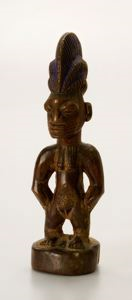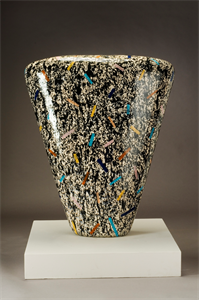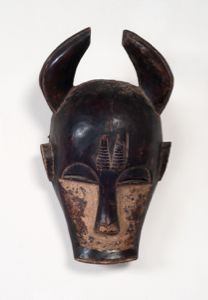
Yoruba Peoples
African
The Yoruba, who have the highest incidence of twin births in the world, traditionally believed that twins share a single soul. If one died, they had a carver make a small twin figure, "ere ibeji," to represent the deceased, not as an infant but as an adult. The mother of the surviving twin cared for the ere ibeji as they did the surviving twin lest the spirit of the deceased beckon the living twin to join it in the spirit world. Twin figures were fed, bathed, dressed, and rocked to sleep. Many were painted, clothed, or adorned with beads—just like the living twin, who often took responsibility for the images of their soul mates when their parents died.
African
Twin Figure (Ere Ibeji)
20th century
Object Type:
Sculpture
Dimensions:
10 3/4 in. x 3 1/8 in. x 3 in. (27.31 cm x 7.94 cm x 7.62 cm)
Medium and Support:
Wood and pigment
Accession Number:
2013.0017.0032
Credit Line:
Gift of Dileep and Martha Mehta
The Yoruba, who have the highest incidence of twin births in the world, traditionally believed that twins share a single soul. If one died, they had a carver make a small twin figure, "ere ibeji," to represent the deceased, not as an infant but as an adult. The mother of the surviving twin cared for the ere ibeji as they did the surviving twin lest the spirit of the deceased beckon the living twin to join it in the spirit world. Twin figures were fed, bathed, dressed, and rocked to sleep. Many were painted, clothed, or adorned with beads—just like the living twin, who often took responsibility for the images of their soul mates when their parents died.
Portfolio List
Click a portfolio name to view all the objects in that portfolio
This object is a member of the following portfolios:
Your current search criteria is: Portfolio is "Classification: Sculpture" and [Object]Display Artist is "Yoruba Peoples".

